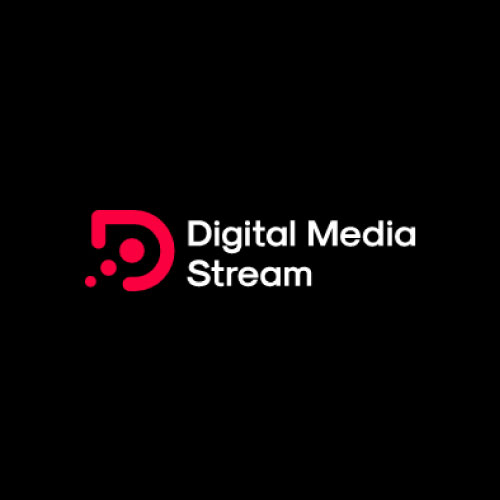B2B PPC: Picking the best Google Ads bid strategy for high quality leads


The ability to switch from bid strategy to bid strategy is as simple as a few clicks. However, the difference in performance these bid strategies can achieve is profound. However, not all accounts will be able to use all bid strategies and it is important to pick the most appropriate bid strategy for your account’s circumstances if you want to maximize performance.
In this blog, we will talk through each google ads bid strategy, when and why you would use it and the set-up required to get the most out of it. We recommend that you identify which bid strategy is most appropriate for your current setup and then think about how you can proceed down the list to best leverage the automated bidding that Google has to offer.
Beginner: Maximise Clicks
Maximise clicks can be used on any account and simply instructs Google to get as many clicks as possible within budget.
This is best used for newly setup accounts and campaigns to gather a lot of data quickly. Gathering this data will allow you to quickly identify which keywords are actually more relevant to your product than others and also keywords that aren’t.
Whenever we launch campaigns we like to start on maximise clicks. We do this to get a better idea of the breadth of search terms around our keywords and the search terms our ads are most resonating with.
Many PPC managers launch with maximise conversions immediately but this can lead to the system doubling down on what it knows works, never giving an insight into other opportunities.
Unlike other bid strategies, maximise clicks takes into account bid modifiers such as geography, audience and device are taken. This is why we recommend starting with this bid strategy, following up with optimisations until you have around 30 conversions and then switching to a conversion based bid strategy.
Beginner: Manual CPC
Manual bidding often feels like it has been forgotten. Google has seriously pushed bid strategies over the last 5 years and let’s be honest, they have come a long way and are pretty good.
However, Manual CPC does still give the largest amount of control within an account. Often in B2B accounts the CPCs can be scary high, and I've often cursed at a bid strategy for spending a sky-high bid on a search term that I didn’t believe was worth it. Manual CPC helps to control this, allowing you to prioritise spend where needed and based on performance.
We would only recommend this if you had a relatively small account and enough time to actually do it right. If this is the case, and maybe you don’t have enough conversion data to switch to a conversion based bid-strategy, this could be the one for you. I mean you know your product better than anyone right.
Obviously, similar to maximise clicks, you can use bid modifiers such as device, location, audience, time of day etc, to get really granular with your optimisations and improve performance.
Beginner: Target Impression Share
Target impression share instructs Google to achieve a certain impression share for the keywords provided.
This is only really useful for branded keywords, where the goal is to make sure that your own branded ads stay at the top of the page instead of competitors.
I would stay away from this for non-branded keywords. Google’s matching has become so loose it is unclear what search terms you Google would choose to try and get your target impression share for making the data meaningless.
Average: Maximise Conversions:
If you have managed to set up conversion tracking on your site, good job! I know in a lot of cases it can be quite the task.
Maximise conversions gets the bidding system to get as many conversions as possible with your budget.
As we know in B2B, a conversion can mean many different things, whether it’s a gated content download, newsletter download, demo request or whatever choose a measure of success.
Typically, I would recommend splitting out campaigns by conversion type, we all know it is a lot easier to get someone to download an ebook than book a demo and seperate campaigns geared towards each objective avoids the trap of your campaign completely optimising towards ebooks over the demo requests.
We would also recommend connecting your CRM to google ads and exporting your lifecycle stages as conversion goals. If you are getting a decent number of MQLs through, changing your bid strategy to exclusively optimise towards MQLs is a good way of increasing the quality of your leads. The same can be said for any lifecycle further down the funnel, however, often there is not enough conversion volume for the bid strategy to operate effectively here.
Regardless, maximise conversions is a great initial bid strategy to start optimising towards what matters.
Average: tCPA
tCPA gets Google to try and get as many conversions as possible whilst hitting a user-chosen CPA.
This is a good bid strategy if you have clear efficiency targets that you have to hit. If you have connected your CRM it is also a good way to improve cost per MQL.
We would not recommend using just to improve cost per lead. As we all know, the cheaper leads tend to be the lower their quality and this bid strategy can just incentivise Google more to double-down on the lowest quality areas.
We would recommend setting your tCPA as similar to achieved performance and then tweaking from there. In terms of changing targets, to maintain stability we would recommend changing no more than 30% each week.
Expert: Maximise Conversion Value
Maximise conversion value instructs Google to get as much conversion value as possible for your budget. It also more importantly allows a lever for B2B marketers to get Google to take lead quality into account.
You can apply this in many ways: a basic example is giving a gated content download a lower value than a demo request, the more advanced way (and what we would recommend), is importing lifecycle stages from your CRM into google ads e.g. lead, MQL, SQL, Opportunity and assigning these stages different values. This will get the algorithm to prioritise areas of the account that not only produce a lot of leads but a lot of high quality leads.
To decide what value each lifecycle stage should be assigned, we recommend trying to get as close to the real life value of conversion values as possible. For example, if the average deal value of a closed won PPC deal is £20,000, and 50% of Opportunities becomes closed won, we recommend setting the value of an opportunity at £10,000. Then repeat this process for each of the lifecycle stages.
An alternative, which is less ideal but useful if you don’t have a lot of data, is to simply set an arbitrary value e.g. lead =1, mql = 5, SQL = 20, Opp = 50. To decide the difference between values I find it useful to set an opp at a value of 100 and then based on progression rates down the funnel assign the other values e.g. if 1% of leads become opps then the value of a lead would be 1.
Expert: Maximise Conversion Value with tROAS
The most advanced of all the bid strategies is to use a maximise conversion value bid strategy with a tROAS. Why is this the most advanced? At this point, if set up correctly you can actually bid to a form of ROI!
This is the winning scenario for marketers as it essentially means you have a sense of what you’re going to get out from putting money in, making it a lot easier to forecast and making some interesting observations in the account.
The set up is similar to the previous bid strategy, in working out what the value is from each lifecycle stage and then assigning what you would like ROI to be.
We recommend setting the initial value close to actual performance, to avoid sudden increases or reduction in spend / CPCs. We would also recommend not to change the tROAS, more than 30% each week, again to reduce volatility.
It is important that the assigned conversion values are tweaked based on performance of those actual leads and funnel progression. There will be a lot of changes from number of form fields to changes in SDR outreach that might drive you to change the value of a lifecycle stage.
Conclusion:
Voila, you have moved from a maximise click rookie to an expert who can bid to ROI.
For more information about B2B PPC and how B2B Hackers can help you bring in high quality leads by reading the rest of our blog here, or our services page here
Find a B2B SaaS Expert
We've collected a directory of B2B SaaS experts and agencies that we've reviewed and categorised based on service and specialism for your review.












